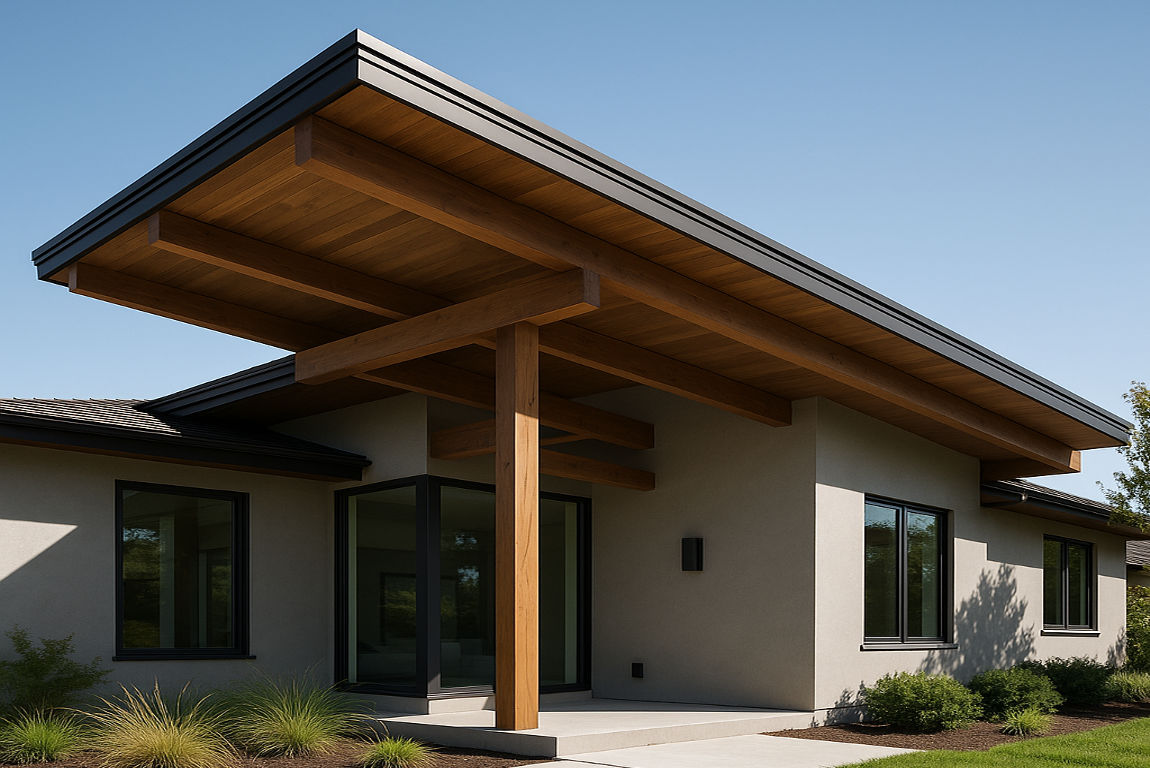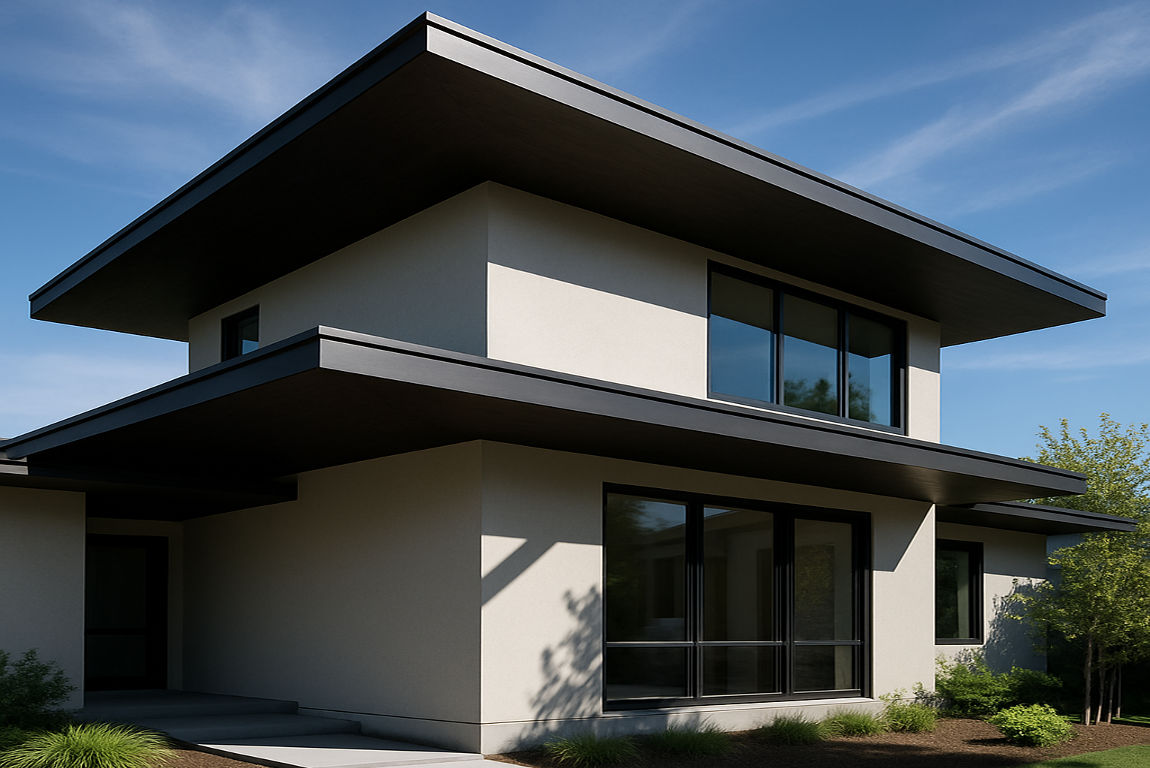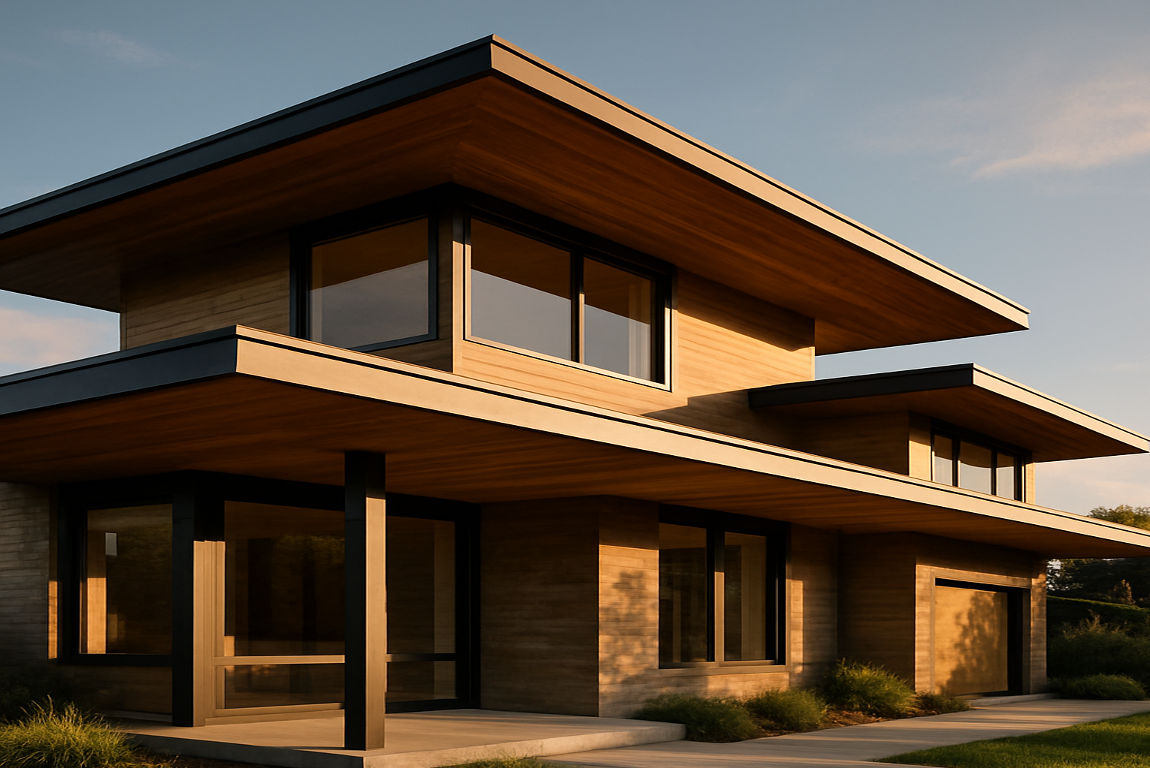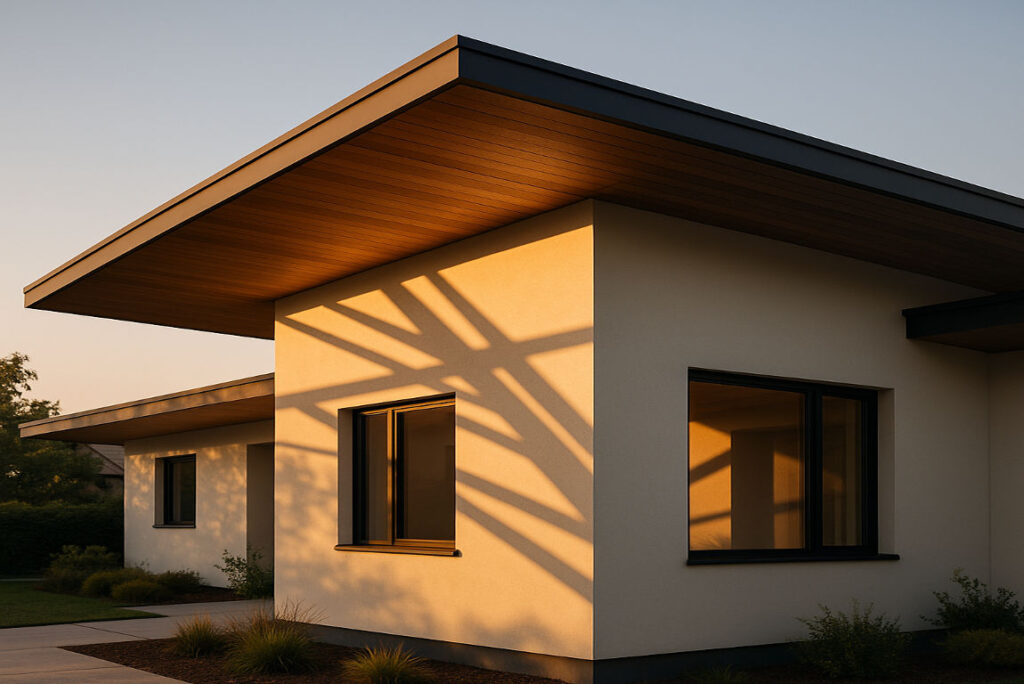An overhang on a house is more than just a functional architectural feature—it’s a design element that can completely transform the look and feel of your home. Whether you’re aiming to boost curb appeal, create a cozy outdoor space, or protect your home from the elements, an overhang can be the perfect solution.
By the end, you’ll have all the information you need to plan and execute the perfect overhang project for your home.
What is an Overhang on a House?

An overhang on a house refers to a structure that extends outward from the roof, wall, or entryway of a home. It serves both functional and aesthetic purposes, offering protection from the elements while enhancing the home’s overall design.
Common Types of Overhangs
There are several types of overhangs, each with its unique style and purpose:
- Eaves: These are the edges of the roof that extend beyond the walls, providing shade and protection.
- Awnings: Often made of fabric or metal, awnings are attached above windows or doors to shield them from sunlight and rain.
- Canopies: Larger than awnings, canopies are freestanding or attached structures that cover entryways or patios.
- Pergolas: These are open-roof structures with beams or slats, perfect for creating shaded outdoor spaces.
- Porticos: A small roof supported by columns, typically found over front doors, adding a touch of elegance.
Each type of overhang serves a specific purpose, and choosing the right one depends on your home’s design and your needs.
The Benefits of Adding an Overhang on House

Adding an overhang to your home isn’t just about aesthetics—it’s a practical investment that offers numerous benefits. Let’s dive into why homeowners are increasingly opting for stylish overhangs.
You may also read (when should catholics remove christmas house decorations).
Enhanced Curb Appeal and Property Value
An overhang can dramatically improve your home’s exterior, making it more visually appealing. Whether it’s a sleek modern design or a charming rustic style, an overhang adds character and sophistication. This boost in curb appeal can also increase your property’s market value.
Weather Protection
Overhangs shield your home from harsh weather conditions, such as:
- Rain: Prevents water from seeping into doors and windows.
- Sun: Reduces UV damage to walls, doors, and furniture.
- Snow: Keeps entryways clear and safe during winter.
By protecting your home’s exterior, overhangs can reduce maintenance costs in the long run.
Improved Energy Efficiency
Strategically placed overhangs can help regulate indoor temperatures by blocking direct sunlight during summer and allowing sunlight in during winter. This reduces the need for air conditioning and heating, leading to lower energy bills.
Usable Outdoor Living Spaces
Overhangs create shaded areas that can be transformed into cozy outdoor spaces. Imagine enjoying a cup of coffee on your porch or hosting a barbecue under a covered patio.
Protection for Outdoor Furniture
If you have outdoor furniture, an overhang can protect it from rain, sun, and other elements, extending its lifespan.
Popular Overhang Styles for Modern Homes

When it comes to overhangs, there’s no one-size-fits-all solution. The style you choose should complement your home’s architecture and reflect your personal taste.
Contemporary Minimalist Overhangs
These sleek designs feature clean lines and simple shapes, often utilizing materials such as metal or glass. They’re perfect for modern homes with a minimalist aesthetic.
Classic and Traditional Designs
Traditional overhangs often feature decorative elements, such as brackets or columns. They’re ideal for homes with a timeless or vintage look.
Rustic and Farmhouse-Inspired Overhangs
Rustic overhangs use natural materials like wood and stone, creating a warm and inviting feel. They’re a great choice for country-style homes.
Custom Architectural Features
For a truly unique look, consider a custom-designed overhang that incorporates innovative shapes, materials, or lighting.
StyleKey FeaturesBest For
Contemporary Minimalist Clean lines, metal/glass Modern homes
Classic Traditional Decorative brackets, columns, Vintage or timeless homes
Rustic Farmhouse Natural wood, warm tones Country-style homes
Custom Designs, Unique shapes, innovative materials, Personalized aesthetics
Materials for Overhangs: Pros and Cons

Choosing the right material for your overhang is crucial for ensuring durability, aesthetics, and ease of maintenance. Here’s a breakdown of popular materials:
MaterialProsCons
Wood Natural beauty, versatile Requires regular maintenance
Metal Durable, modern look Can be prone to rust
Polycarbonate/Glass: This material offers light transmission and weather resistance, but it is expensive and requires regular cleaning.
Fabric is Affordable, customizable, Less durable, and fades over time.
Planning Your Overhang Project
Before diving into construction, careful planning is essential.
Assessing Your Home’s Structure
You may also read (a complete guide to cutting home).
Ask yourself:
- Where will the overhang be most effective?
- How much shade or protection do you need?
- Does your home’s structure support the design you want?
Budgeting and ROI
The cost of an overhang depends on factors like size, materials, and labor. While it’s an investment, the return in terms of energy savings and property value makes it worthwhile.
Step-by-Step Guide: Installing an Overhang on House
- Design and Blueprint Creation: Work with an architect or designer to create a detailed plan.
- Securing Permits: Check local building codes and HOA rules.
- Choosing Materials: Select materials that suit your budget and style.
- Construction: Build the foundation, frame, and roof.
- Finishing Touches: Add paint, lighting, or decorative elements to complete the look.
DIY vs. Professional Installation: What’s Right for You?
While DIY projects can save money, professional installation ensures quality and safety.
FactorDIYProfessional
Cost Lower Higher
Expertise Needed High Minimal
Time Commitment: Longer, Shorter
Overhang Maintenance and Longevity Tips
To keep your overhang in top condition:
- Clean regularly to remove dirt and debris.
- Inspect for damage after storms or heavy use.
- Repair or replace worn-out parts promptly.
Creative Ideas to Style Your Overhang on House
- Lighting: Add string lights or LED strips for ambiance.
- Greenery: Hang planters or grow vines for a natural touch.
- Smart Features: Install retractable awnings or motion sensors for added convenience.
You may also read (how to estimate the cost to rewire a house in the uk).
